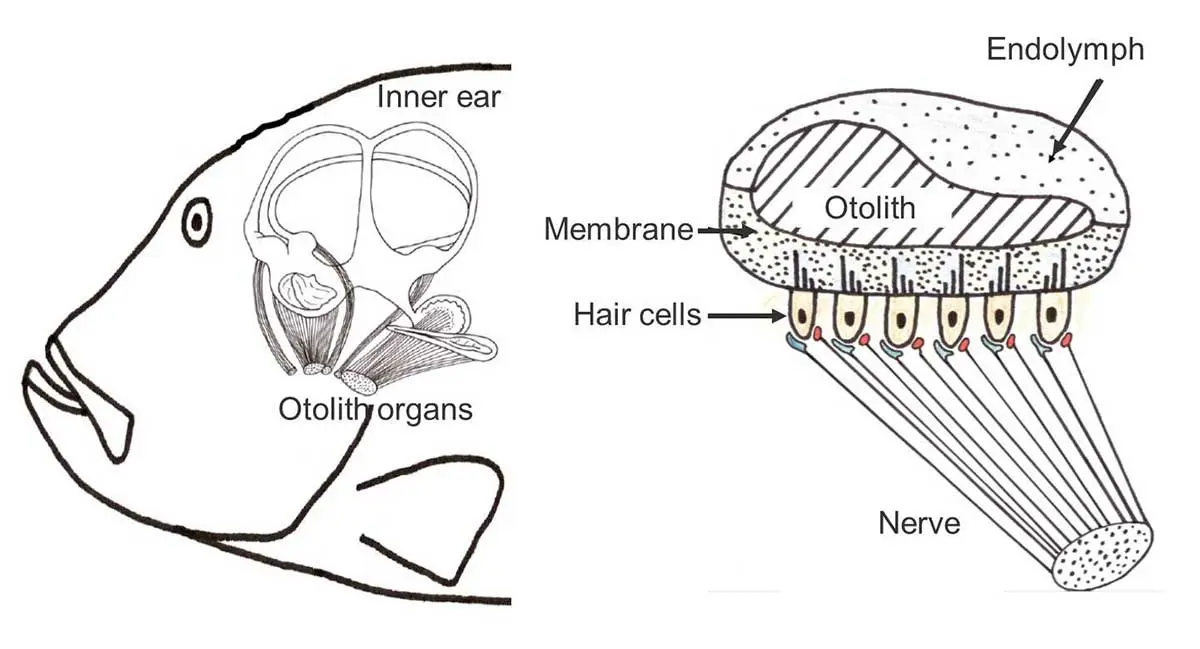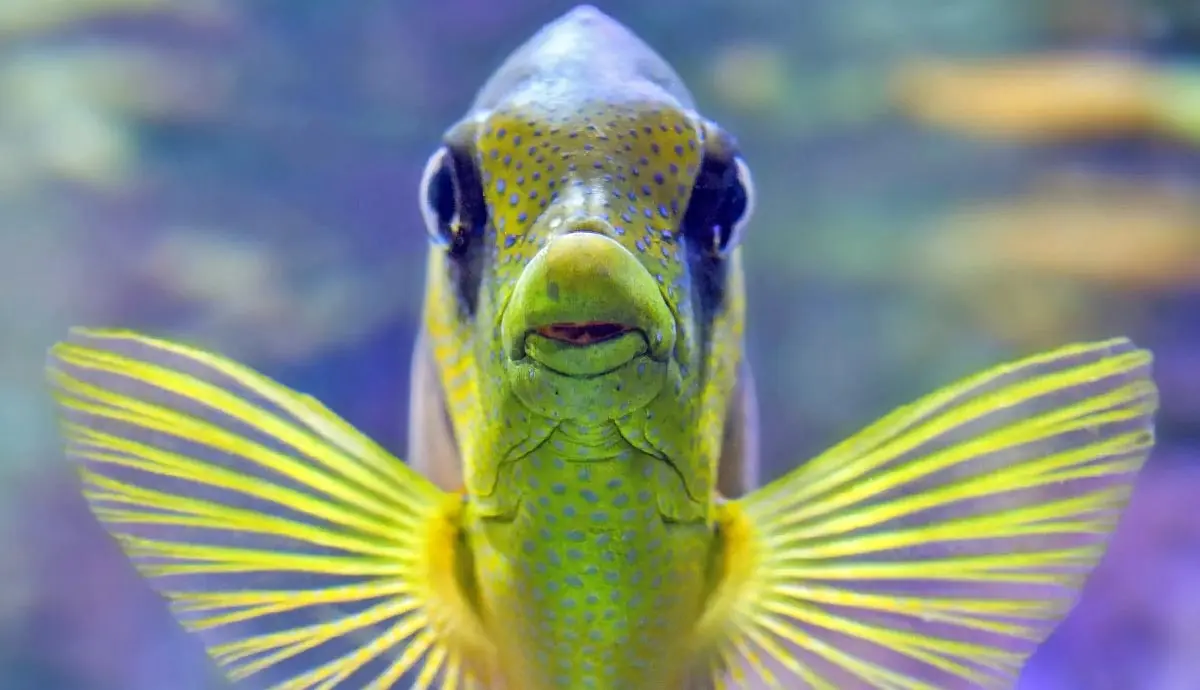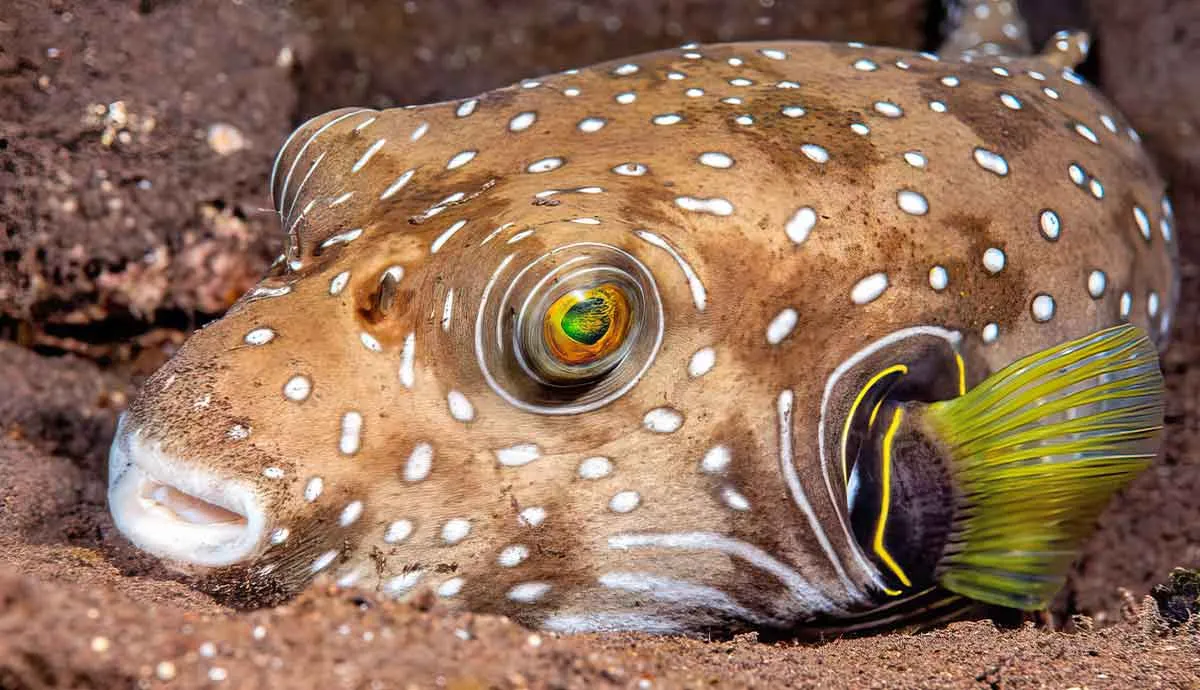Topic of the day: do fish have ears? Yes, fish have ears, but their hearing process is different than ours. Fish actually have a lateral line system for the detection of other fish, prey, and predators through vibrations and changes in water pressure.
They also have small structures known as otoliths, which help them maintain balance and orientation because they’re gravity- and acceleration-sensitive.
Therefore, while fish can’t hear in the traditional sense, they can detect the presence of someone nearby in different ways. Let’s learn more!
Do Fish Have Ears?

Fish have ears, but their hearing system isn’t the same as that of land animals. Most fish detect and interpret sounds using their inner ear as well as their lateral line system.
The inner ear has structures called otoliths, which sense sound vibrations by detecting differences in movement between the otoliths and the fish’s body. This helps fish perceive environmental sounds like waves, rain and even sounds from other animals.
Additionally, some fish species have adaptations like the Weberian ossicles or gas-filled ducts connected to their swim bladder, which make their hearing even better.
The lateral line system, on the other hand, is made up of neuromasts and helps fish sense water movements and avoid predators, among other things.
That being said, fish can’t hear sounds in the air, so they can’t hear footsteps on the shore or above the water. However, they can detect vibrations and changes in water pressure, including those created by various types of movements in the water.
In summary, while fish don’t hear sounds the same way land animals do, they still have their own auditory system that helps them survive underwater.
What Are Fish Ears Called?

As we already stated, fish don’t have ears as we do, but they can still hear using their inner ears and lateral line system. Moreover, their inner ears include the otolith organs, semicircular canals, and other sensory cells within the inner ear.
Interesting fact: Sound travels faster in water than in air, which helps fish communicate over long distances. However, not all fish hear the same. Some have better hearing depending on how their inner ear is built.
Fish typically hear best in a range of 30 to 1000Hz, with some exceptional species able to detect sounds up to 5000Hz. For comparison, humans generally hear between 20 to 20,000Hz.

Fish use sound for various purposes, such as finding mates. Male midshipman fish sing to attract females, and only fertile females respond to these songs. Scientists think this is because fertile females have higher levels of estrogen, which helps them hear high-frequency mating songs.
Additionally, studies show that juvenile fish use sounds from different habitats to find their way to safe reef habitats at night.
Now, fish hearing can be affected by various factors, such as the following:
- Increased noise from boats can disrupt fish communication, affecting their ability to survive and reproduce.
- Ocean acidification, caused by increased carbon dioxide in the atmosphere, can also impact fish hearing by affecting the calcium carbonate structures in their inner ears.
- Fish farming can also affect hearing, as captive-bred fish may have different ear structures that affect their ability to hear.
Do Fish Hear Through Their Gills?

Fish don’t hear through their gills. Instead, they mainly hear through their inner ears. The anatomy of a fish reveals that these creatures use their gills for breathing, while their hearing ability comes from sensory organs located within their inner ears.
These organs, such as otoliths and hair cells, can sense vibrations in the water and translate them into auditory signals that the fish’s brain can interpret. In other words, while gills play a key part in fish respiration, they don’t aid their hearing.
Are Some Fish Deaf?

A study published in Biology Letters suggests that blind cavefish, which live in dark environments, have largely lost their ability to hear. While all fish can hear in their own way, some can lose their hearing for various reasons.
More specifically, the study found that partially deaf and blind cavefish, which live in dark caves, have trouble hearing high-pitched sounds. Surprisingly, they couldn’t hear these sounds at all, unlike fish that live on the surface.
Even though both types of fish had a similar number of hair cells for hearing, cavefish didn’t respond much to high-frequency sounds.
Researchers think the loud noises in caves, like water ripples and dripping, might be to blame. Despite their hearing problems, cavefish have other senses, like the “lateral line,” which helps them feel water movements.
This study shows how living in caves affects animals’ senses, and more research will look into whether other cave animals have similar hearing issues.
Final Thoughts

In summary, fish have clever ways of sensing their underwater world without traditional ears. Their inner ears and lateral line system help them feel vibrations and movements.
If you’re a fish lover, you already know that most fish make great pets because they’re relatively low-maintenance, colorful, and can benefit your mental health.
However, you must return the favor by keeping noise levels low, providing a proper diet, and maintaining a well-balanced aquarium.





